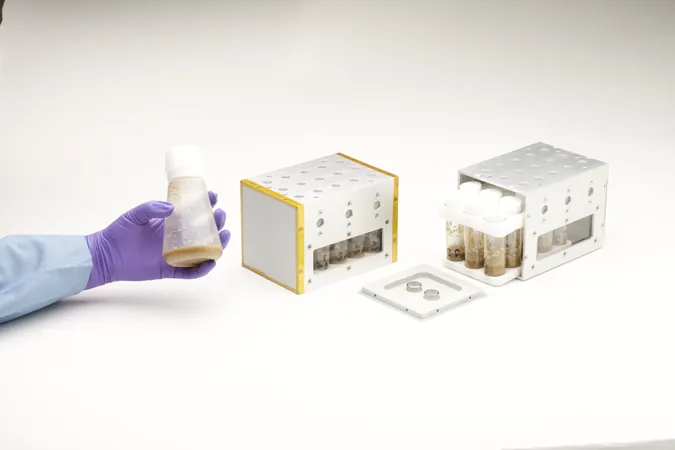
Unveiling the Secrets of Facial Bacteria: A Pathway to Probiotics for Flawless Skin
2025-05-01
Author: Daniel
The Hidden Role of Bacteria in Skin Health
Did you know that the types of bacteria living on your face can significantly influence skin conditions like acne and eczema? Recent research from MIT delves deep into the bacterial world of our skin, particularly focusing on two dominant species: Cutibacterium acnes and Staphylococcus epidermidis. Understanding how these bacteria interact and evolve could hold the key to revolutionary acne treatments!
Teenage Years: The Crucial Window for Skin Transformation
MIT researchers discovered that many new strains of Cutibacterium acnes are introduced during the early teenage years. This period marks a pivotal transition, as the bacterial landscape on our faces becomes more stable afterward. Tami Lieberman, the senior researcher, emphasizes that these formative years might be the perfect time to integrate beneficial probiotic strains into skincare routines.
Probiotics: Potential Acne Fighters?
Lieberman explains, "If we identified a strain capable of combating acne, we would want to apply it during the teenage transition. This research paves the way for crafting tailored probiotic therapies to support skin health effectively." Currently available probiotic strains have yet to prove their effectiveness, but this study could change that.
The Great Microbial Mystery: What Lies Beneath?
Despite Cutibacterium acnes being linked to acne, it remains unclear why acne affects some individuals and not others. Research suggests certain strains may provoke inflammation, or differences in personal immune responses may play a role. The study sheds light on how likely new bacterial lineages can establish themselves on our skin — making it essential to pinpoint the best times to introduce probiotics.
The Evolution of Bacterial Strains
By analyzing samples from children and their parents, researchers tracked bacterial lineage changes over time. They found a total of 89 C. acnes lineages and 78 S. epidermidis lineages, marking a more dynamic microbial community than previously thought. This finding challenges the idea that these communities are static.
The Hormonal Impact on Bacterial Dynamics
As teenagers experience surging hormone levels, their skin’s oil production skyrockets—creating a feast for bacteria. The study notes this time can lead to a dramatic increase in bacterial density on the face, making early adolescence an opportune moment for introducing probiotics that could help patch skin problems.
Understanding the Turnover Rate of Bacteria
Interestingly, while C. acnes strains appear stable over time, the turnover rate for S. epidermidis is significantly higher, with strains lasting less than two years on average. This high turnover hints at fascinating individual dynamics in skin microbiomes, shaped possibly by genetics, personal habits, or even skin care choices.
Looking Ahead: The Next Steps in Bacterial Research
With new insights from this study, researchers aim to explore the connection between the timing of bacterial acquisition during adolescence and immune system responses. They are also keen to understand why unique strain communities persist among individuals, even within close family settings.
The Financial Backing of Breakthrough Research
This ground-breaking research was supported by the MIT Center for Microbiome Informatics and Therapeutics, the Smith Family Foundation, and the National Institutes of Health. As the quest for clearer skin continues, this study opens doors to innovative probiotic solutions that could revolutionize skin health.




 Brasil (PT)
Brasil (PT)
 Canada (EN)
Canada (EN)
 Chile (ES)
Chile (ES)
 Česko (CS)
Česko (CS)
 대한민국 (KO)
대한민국 (KO)
 España (ES)
España (ES)
 France (FR)
France (FR)
 Hong Kong (EN)
Hong Kong (EN)
 Italia (IT)
Italia (IT)
 日本 (JA)
日本 (JA)
 Magyarország (HU)
Magyarország (HU)
 Norge (NO)
Norge (NO)
 Polska (PL)
Polska (PL)
 Schweiz (DE)
Schweiz (DE)
 Singapore (EN)
Singapore (EN)
 Sverige (SV)
Sverige (SV)
 Suomi (FI)
Suomi (FI)
 Türkiye (TR)
Türkiye (TR)
 الإمارات العربية المتحدة (AR)
الإمارات العربية المتحدة (AR)